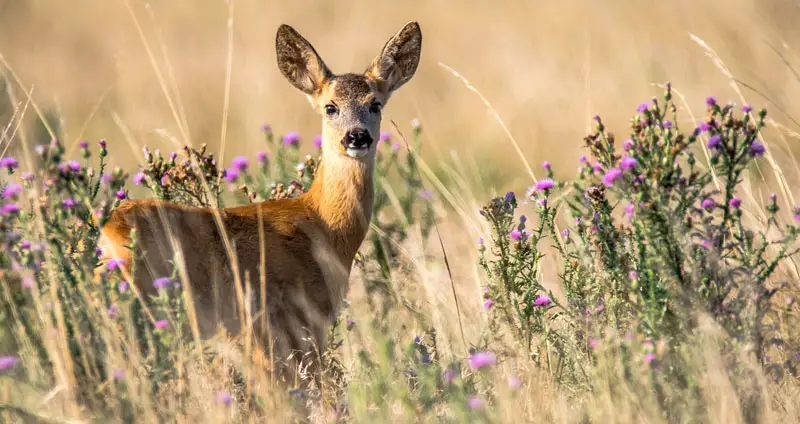Deer aren’t commonly seen as animals that are very high up in the food chain. Instead, they’re seen as skittish, fragile creatures that have a lot of natural predators.
This description isn’t very far off! The reason behind why deer are so alert and agile is because they have so many predators that actively hunt them out. They may be fast, but they can’t fight back.
So, what are the natural predators of deer? Are a staple in the diets of several different animals?
Table of Contents
What Eats Deer?
Quite a few different animals actively hunt deer for food. The main predators of deer include humans, wolves, coyotes, mountain lions, bears, alligators, and various birds of prey, among others.
Many of these predators don’t target deer as their primary food source, but they will gladly hunt and eat them if given the chance.
Let’s take a closer look at the predators of deer.
1. Humans
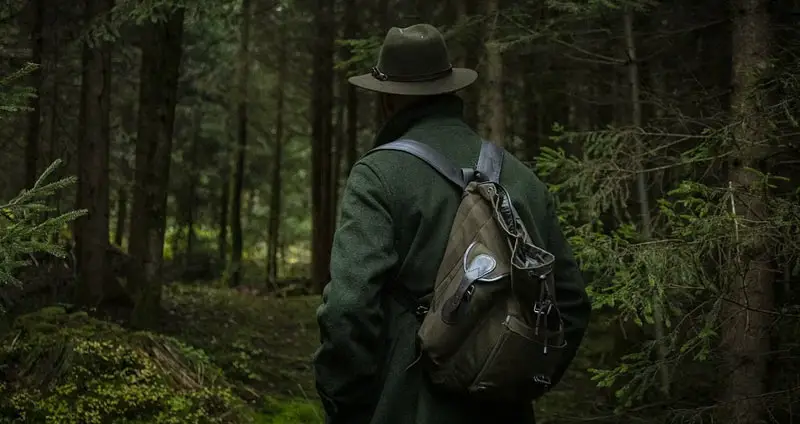
Humans are very prominent hunters of deer. For many years, humans have hunted deer for both their meat and for sport.
Venison, deer meat, is extremely nutritious, easy for hunters to obtain, and delicious, making deer a primary target for hunters.
Deer are also common animals around the world, so they’re a popular target for sport hunting. Most territories heavily regulate deer hunting so as not to upset their natural balance.
So, not only are humans the primary hunters of deer, but they’re one of their biggest eaters, too.
2. Wolves
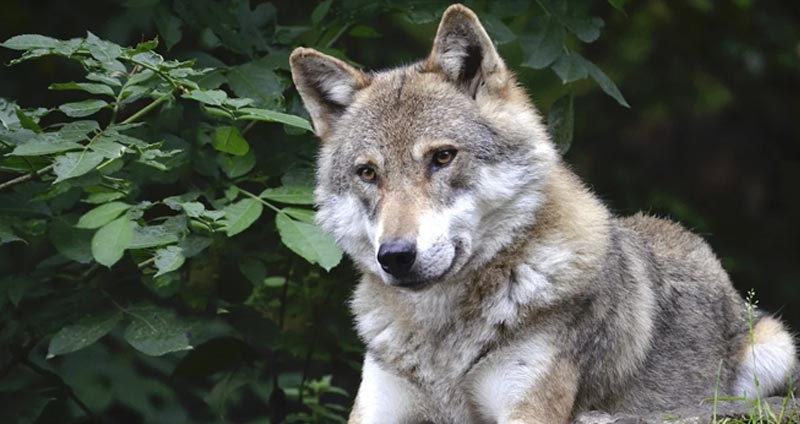
Wolves are apex predators, meaning that they have almost no predators in the wild. Instead, they hunt a variety of vulnerable animals, including deer.
Wolves hunt in packs and aim to take down larger prey. As deer often weigh around 150 lbs, a single kill can feed several wolves comfortably.
This results in wolves actively hunting down deer as they’re fast but defenseless. So, wolves are another primary hunter of deer.
3. Coyotes
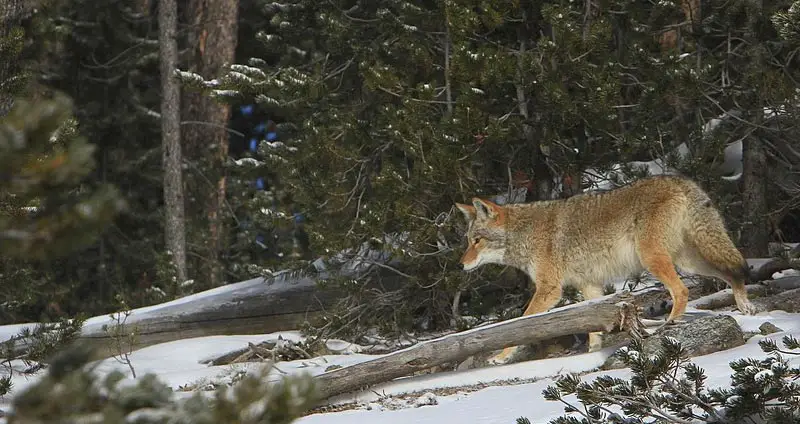
Coyotes are very similar to wolves in the sense that they are carnivorous, eat a large variety of different animals, and don’t have a lot of predators themselves.
However, coyotes differ in the sense that they’re primarily solitary hunters. Because of this, they target smaller animals like rabbits and squirrels — prey that they can take down easily.
Despite this, they do hunt as a pack when they are attempting to take down a larger animal like a deer.
So, coyotes do actively hunt and eat deer — it just isn’t as common.
4. Mountain Lions
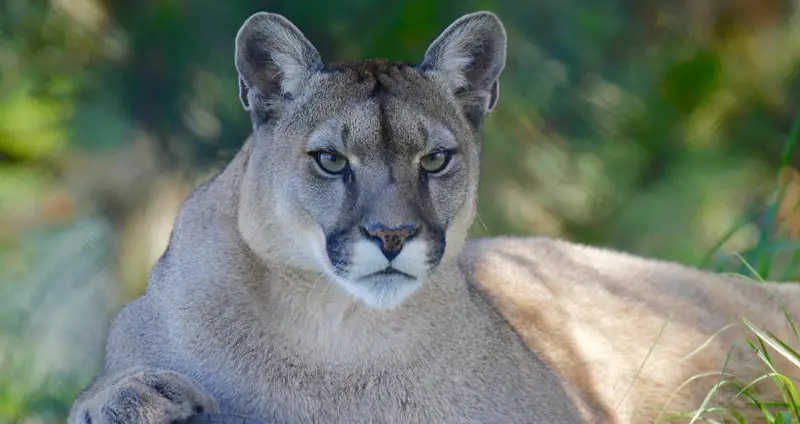
Mountain lions are very prominent hunters of deer. In fact, deer are the staple food of mountain lions!
These solitary, opportunistic hunters hunt from dusk to dawn and rely on stealth to ambush their prey from behind.
A mountain lion will end up hunting about one deer per week as that’s all the food that they require. However, they also supplement it with coyotes, raccoons, rodents, and elk.
5. Lynxes

Much like mountain lions and coyotes, lynxes are ravenous carnivores that ambush a variety of different animals.
Deer are a primary target of lynxes and a staple in their diet. Each adult lynx takes down about one deer per week like mountain lions do.
These deer are also supplemented or replaced with rodents, birds, small mammals, and large mammals alike.
6. Bears
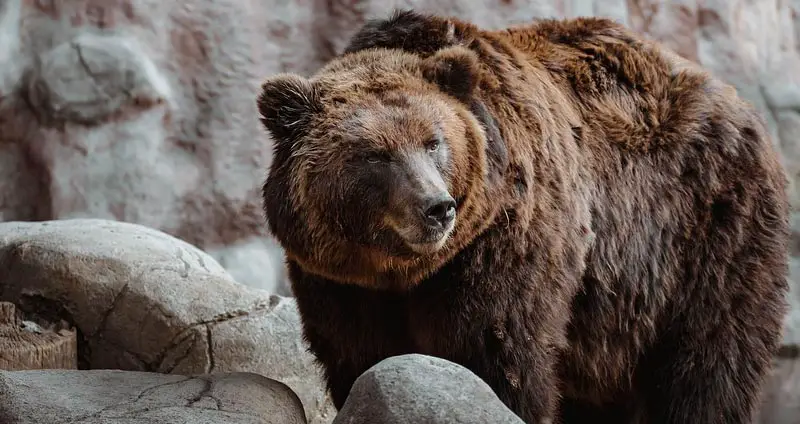
Bears hunt and eat deer regularly, but not as commonly as one would think. These omnivorous creatures make up about 70% of their diet with plant matter.
The main kind of deer that bears will eat are poorly-protected fawns. These deer are very defenseless, slow, and depend on the protection of their parents (which doesn’t stand up to a bear).
Bears will also feed on sick, disabled, or distracted deer that fail to run away. Healthy deer can typically out-maneuver and keep a safe distance from bears.
If a bear can catch a deer, though, it will gladly eat it.
7. Wolverines

Wolverines are fairly small, but they don’t usually act their size. These bear relatives won’t think twice about taking on an animals that’s significantly larger than them.
Deer aren’t the primary target of wolverines, but they’ll capitalize on an unprotected fawn or a disabled adult deer.
Wolverines are quite slow, though, so healthy adult deer are often unattainable for them.
8. Hogs
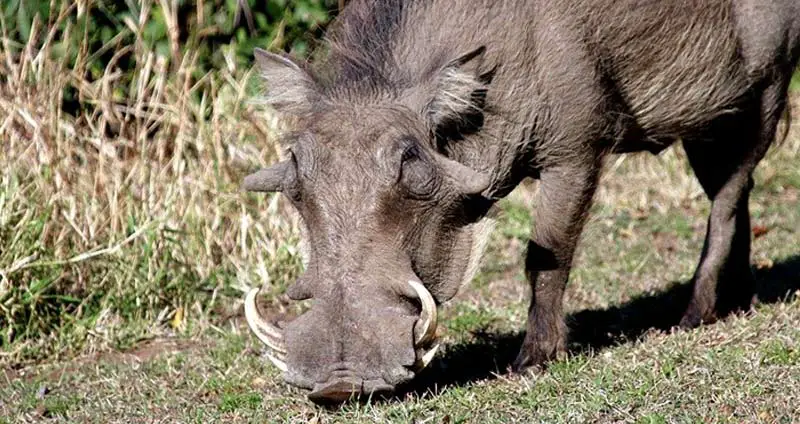
Deer and hogs have a very strange relationship. Both animals inhabit the same areas, and they don’t exist peacefully.
It isn’t a very common occurrence, but wild hogs have been seen both killing deer and eating already deceased deer.
For the most part, deer are able to keep away from wild hogs and don’t risk being eaten, but it can still easily occur.
9. Alligators

Alligators are prominent predators of deer, eating more deer than most people would expect!
This happens when deer walk up to the edge of a lake to drink. Alligators wait just beneath the surface and spring out to grab a deer while it drinks and its guard is down.
Deer aren’t the primary target of alligators, though — they’ll grab mostly any mammal that comes close enough to them.
However, alligators do eat deer quite often.
10. Birds of Prey
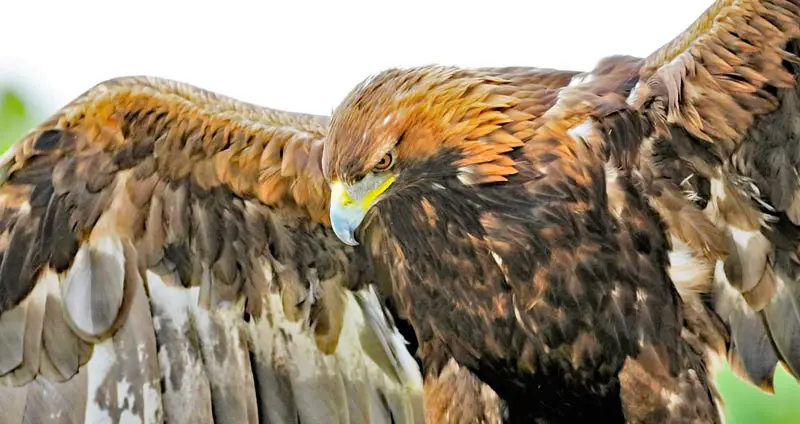
Various birds of prey actively hunt down deer for food, although it isn’t a very common sight.
Fawns are the most common type of deer taken down and eaten by birds of prey as they’re much smaller and defenseless.
However, large deer can also fall victim to hawks and eagles. A well-placed ambush can take down an adult deer, but it’s more likely to be successful if the deer is sick.
How Do Deer Defend Themselves?
It seems like every animal is out to attack and eat deer — and that’s not entirely wrong! Deer have a plethora of predators in the wild — more than many other animals their size.
All of this danger has resulted in some good, though. Deer have developed excellent survival instincts over the years that give them a better chance at living a full life.
So, how exactly do deer defend themselves or steer clear of predators?
- Impressive agility – First and foremost, the primary defense mechanism of deer lies in their agility. Adult Whitetail deer can run up to 30 miles per hour, which is much faster than most predators. They can also jump very far and high, in addition to possessing impressive swimming abilities. With agility like this, they’re able to stay away from most predators.
- Camouflage – The brown coats of deer provide great camouflage in woodlands. By simply standing very still, they can go unseen by quite a few different predators.
- Great hearing – While deer don’t have great eyesight, they make up for it with their hearing. Deer hear best in the range that humans hear in, but they’re able to pick up sounds in a much wider range. This allows them to detect predators before they get close enough to pose a threat.

